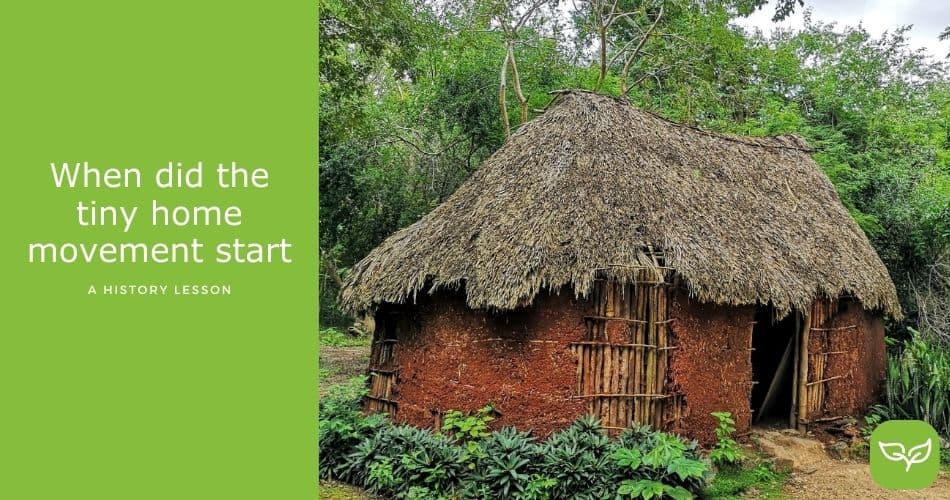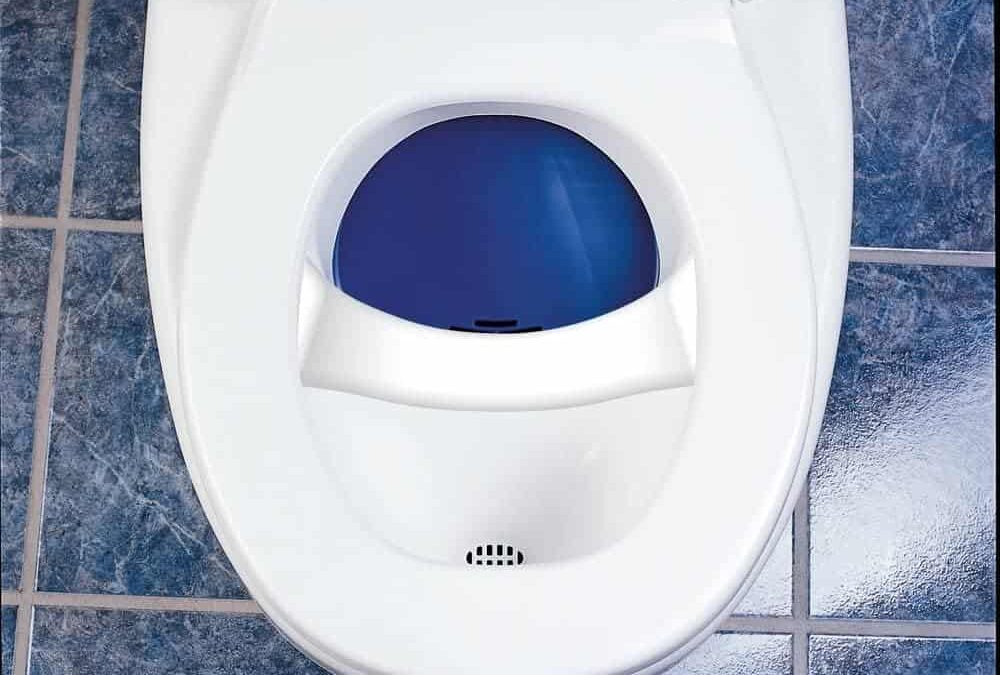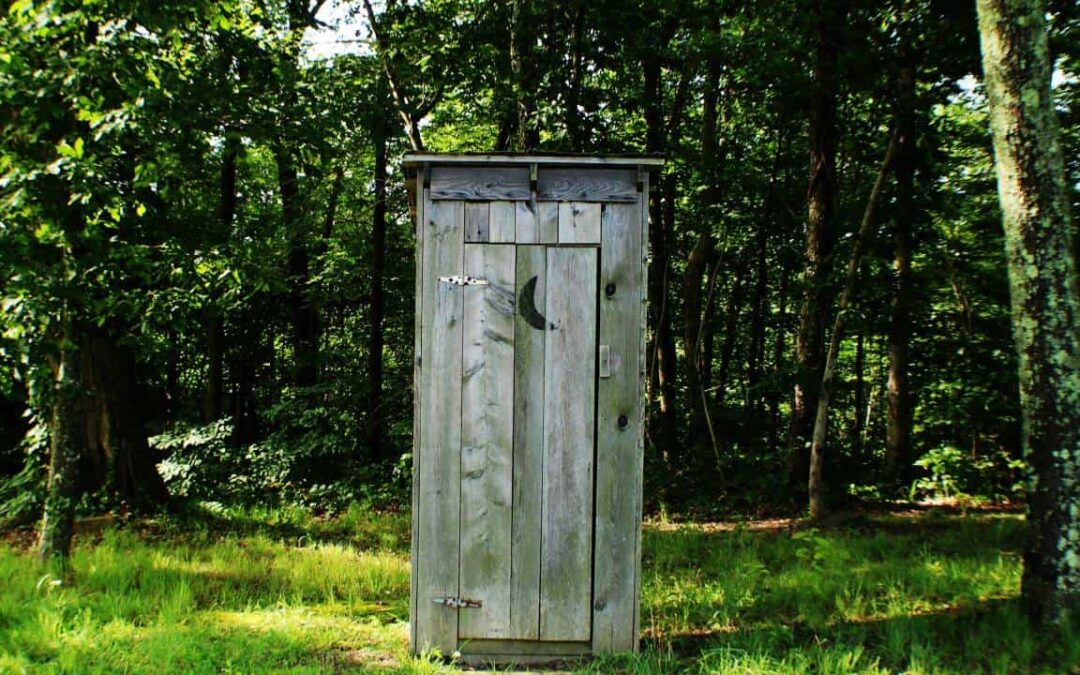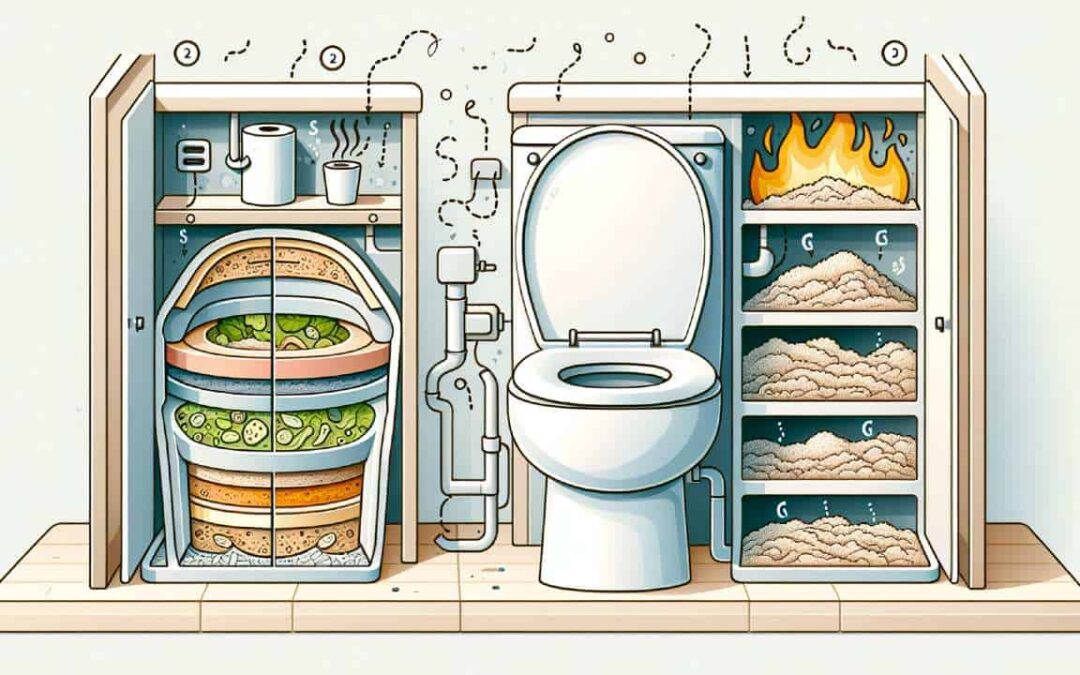Tiny houses seem to be everywhere. These days, we can live in tiny house communities, book a tiny house holiday, rent out a second tiny house, and buy a ready-made tiny smart villa – you name it. However, this is all relatively new: the concept has only been here for about twenty years.
In this article, we will look at the development of the tiny house movement, and at the events that have spurred its growth and that will make it grow even more.
Tiny living is ancient
All over the world, people have lived in dwellings that we would today coin as ‘tiny homes’. For example, the Inuit of Greenland, Alaska, and Canada, built their igloos. They built their igloos with snow, knowing that snow has insulating properties, and knowing that the shape of the igloo would prevent it from ever collapsing. They had a separate entrance, to prevent the cold from entering the house. They slept on an elevated part because heat rises. They had tunnels leading from one igloo room to the next, and sometimes they lined the walls with hides. They made it work, just as many tiny lifers are making things work, sometimes with little means and in widely varying climates.
Many of the indigenous people were nomadic, not having adopted a sedentary lifestyle when perhaps other civilizations had. For example, the Sioux Indians lived in their teepees, and the nomadic peoples of Kyrgyzstan had their yurts. The Sami in northern Finland built their houses from logs and closed off cracks between the logs with moss. Their huts looked like a teepee more or less, with an opening on top. The huts looked like they were part of nature, and when it was time to move on, they would just leave the house there, and it would decompose over time. Now that is a stark contrast with most of us: we want our precious house to be ours, always be ours, and stay forever! I am not saying we should start building huts, but we can learn from indigenous people such as the Sami, and widen our perspective.
Here you can learn more about the Sami way of living:

The Sioux, Kyrgyz, and the Sami could follow their herd of cattle when it was time to look for fresh water, grass, and plants, and they could leave when danger was imminent. The teepees, the wooden huts of the Sami, and the yurts were comfortable, well ventilated, spacious, and easy to move. The smoke of the fire within the yurt, hut, or teepee could leave the house via the opening at the top. The fire was used for warmth, cooking, and drying hides of animals. Pretty genius if you think about it, right? The yurt has made a comeback, a come I should say, in recent years. It is now fairly common to book a yurt or a teepee for glamping, for example.

Or take a look at the earthen houses of the desert people of Rajasthan in India. These cob houses in Rajasthan keep cool during the day, and warm during the cold desert nights. The Rajasthan people in the villages use cow dung as fuel for their fires in their homes and bake the most delicious chapatis. These are some serious skills! Maintenance of these simple houses is very easy and it costs nothing: the people can mend it themselves and rely on themselves. For example, one can easily add an extra layer to the earthen floor. These days people are rediscovering all of this: many tiny lifers build with cob, and who have rocket mass heaters and cob ovens. All made of the earth, natural and free.
Here you see an excellent example of a cob building in the desert of Rajasthan:
Of course, back in the days, all materials were natural, and although there are tiny lifers who build naturally, there are many who build or convert with modern materials. There are also a lot of tiny lifers who work with recycled materials, thereby not posing a burden on the environment. Used shipping containers, for example, are also being used as tiny houses. This way we need not dispose of the material, instead, it is used as a home.

Living outside of society
In the Western modern world, the people living in ‘tiny homes’ were mostly people living on the fringe, or outside of society, such as gypsies, and circus caravans. It was not a socially accepted way to live, it was not a norm in society, as it is now. People living on the fringe, or outside of society, have historically enjoyed more relative freedom than people whose lives are tightly knit into society. It is no surprise that a lot of tiny lifers are freedom-loving people and prefer to be on their own, oftentimes in nature.

Of course, poverty was, and in many parts of the world, still is, part of living tiny. People in trailer parks, small shacks, ghettos, and slums: it is all associated with poverty. And many people who are living this way are poor and have no choice to do otherwise.
But the concept and the materials of these ways of living are changing: highly educated people in Western countries are living in shipping containers, and are converting vans and caravans as their permanent homes. To live tiny is no longer something to be ashamed of, it means that one can reduce the impact he or she is making on the environment, it often means living debt-free, having a great outdoor life, and relative freedom. By not having to pay a mortgage, people have more time to pursue their hobbies and experience a greater quality of life. Tiny houses are no longer associated with poverty, but with luxury. The luxury of living in nature, for example, and of having time on your hands.

It is like being tanned: in the old days, no one wanted to be tanned, because that meant that one was working outside, in the fields, as a poor person. While now it is considered something luxurious, a sign of wealth, to be tanned; it means that someone has the money to travel to exotic places, or to go to a beauty salon.
These days, people living in a tiny home can have highly paid jobs, having an off-grid, luxurious smart tiny house that is like a small villa. It is no longer something to be ashamed of, but rather something to be proud of. In the tiny house movement, we see clearly that as times change, our values and opinions change as well.
The concept of tiny
Tiny houses were popularized by John Shafer in 2002, when he designed a tiny house, called it that, and published a guide about it. At first, it was mainly about tiny houses on wheels. But the concept was born.

Recession
Then in 2007 – 2009, when the worldwide recession hit, tiny houses became increasingly popular. More and more people found out that living in a tiny house could drastically cut costs of living, and eliminate a mortgage. Living in a tiny house could mean living comfortably during a recession.
Media, studies
The tiny house movement started receiving more and more media coverage and universities began to publish studies about tiny living. Around 2015 it was still a DIY movement; most people built their own homes and were on their own.
Carbon footprint
The subject of climate change started to dominate in politics and was adopted by the media. Of course, Al Gore had already paved the way with ‘An inconvenient truth’, the documentary about climate change, in 2006. People became more and more aware of the need to have a small carbon footprint. This propelled the tiny house movement even further into the mainstream consciousness. Tiny living seemed in part to offer a solution to the problems that the world was facing.
From unique DIY to a product
At first, tiny houses were mainly DIY projects by individuals: you know, awkward introverts, preppers, people who like to be on their own, nature lovers, and creative people. Converting a van, living in a wooden cabin somewhere remote, often off-grid – overall one could say that the tiny houses were unique.

Tiny as value, as movement
Then tiny living became a lifestyle, representing more than just a DIY small house. It was a way for all kinds of people to live more freely, lower their carbon footprint, and even live in communities of like-minded people. By this time a lot of people in the Western hemisphere realized that consumerism has a cost and that someone has to pay for it. The fashion industry, the plastic industry, the cutting of trees: more and more people started to feel that consumerism as we knew it, placed too high a burden on the health of the planet, and thus on future generations.
Energy transition
The energy transition that has been planned has also stimulated the growth of tiny houses. A lot of tiny houses are off-grid: the use of electricity and gas is minimal. Often gas is replaced by wood. And by living in a tiny house one uses up less energy, to begin with. Tiny living is a way to deal with the energy transition that the world is in, it offers an alternative to a lifestyle that many of us were used to but that does seem to be nearing its end.

Commercialization: from pioneer to mainstream
The idea of low carbon, low cost of living that was tiny, was romantic and a pretty good marketing idea. Architects, engineers, and building companies started developing tiny units and modules and took them into production. This made it possible for a large number of people to live tiny. By now, it was no longer the awkward nature lover that was living in a tiny house. No, now ‘normal’ people such as those with children and a mortgage started buying tiny houses. Of course, they did: it still is a very low-cost, high-quality way of living.
Nowadays, there are plenty of Airbnb tiny houses as rentals: vacation in a tiny house has become increasingly popular. People have been investing in tiny houses as second homes which they can rent out. Where before a tiny house was a way of living with very low costs, it has now also become a lucrative way of investing in real estate. It is a low-cost investment, with high revenue.

Tiny life as part of city life
The high-scale production of tiny houses sparked the development of tiny house streets, neighborhoods, and villages. Tiny houses started to become a feature of city life, of city planning even in some cases. Municipalities in western countries (where there is more legislation concerning building and living) started to open up for those living in tiny houses, and collaborations have started in many cities. There are suburbs full of tiny houses, and even in non-western countries, developers are building tiny home communities.
Climate change
The more urgency governments and NGOs, such as the United Nations and the World Economic Forum, will place on the need to tackle climate change, the more this will drive people to live in tiny houses. It is simply more sustainable than living in a regular house.
When Greta Thunberg entered the world stage, the climate agenda was given a big push, and she received immense media coverage. Her plight made the sustainability goals that politicians and NGOs were focusing on all the more urgent. People started to become convinced of the idea that we need to cut down on our spending, and our consumption level. Live simply, live sustainably, and yes why not, live tiny, became a value in itself.

War in Ukraine
The war on Ukraine has furthered this development: gas and oil have become costly. A lot of people will be driven to alternative resources and alternative ways of living. Scarcity and high costs are two problems that tiny living easily tackles: one plus one is two, it is as simple as that.
Supply chain issues
Ever since Covid hit the globe, supply issues have been there. There have been, and in some places still are, empty shelves in the supermarkets. The world has changed, and people are becoming aware of that. Our dependency on the global system is huge, and it has been showing cracks. This has driven people more towards alternative ways of living, seeking local produce, going off-grid, paying off debt, and, yes, going tiny.
Inflation
Inflation has reached record highs this past year, in Europe, the US, and elsewhere. The prices of gas, oil, and food have gone up tremendously, and what about the housing market? A lot of people can not afford to buy a house, and can not afford to rent space either. For them, tiny living can be a solution.
The stats are not available yet, but this recession and inflationary period may spike a great spurt of growth within the tiny house movement. People now more than ever have good economic reasons for wanting to live tiny.

Final thoughts
What started as an indigenous way of living, was adopted by individuals as an alternative way of living for people in the West. It grew into a concept, a lifestyle, a movement, a product, and finally a way to live a high-quality life amidst all the changes that our world is facing. The fact is that more and more people around the globe are enjoying this lifestyle.
Looking at recent developments, as we have in the above text, this way of living will probably keep on growing. The energy transition, climate change, recession, inflation, and shortages: all of these will drive more and more people to tiny living.
The future
My forecast is that tiny living will be far more widely adopted than it is now, and will morph into other ways of living that we may not even fathom right now. People will spend more time in the virtual world, and less in the physical world, whether we like it or not. The more time is spent in the metaverse, the smaller houses will become, simply because their function has changed. A lot of functions will be taken over by the metaverse, and people will buy houses and other real estate via NFT’s (non-fungible tokens). This is already happening. My guess is that tiny homes will have taken over regular housing in about ten years: if I am wrong I will buy you a 3d vegan apple pie that is traced on the blockchain, deal?
We at Tiny Living Life love to share our passion, and we hope that you enjoyed this article: stay tuned for the next one!



